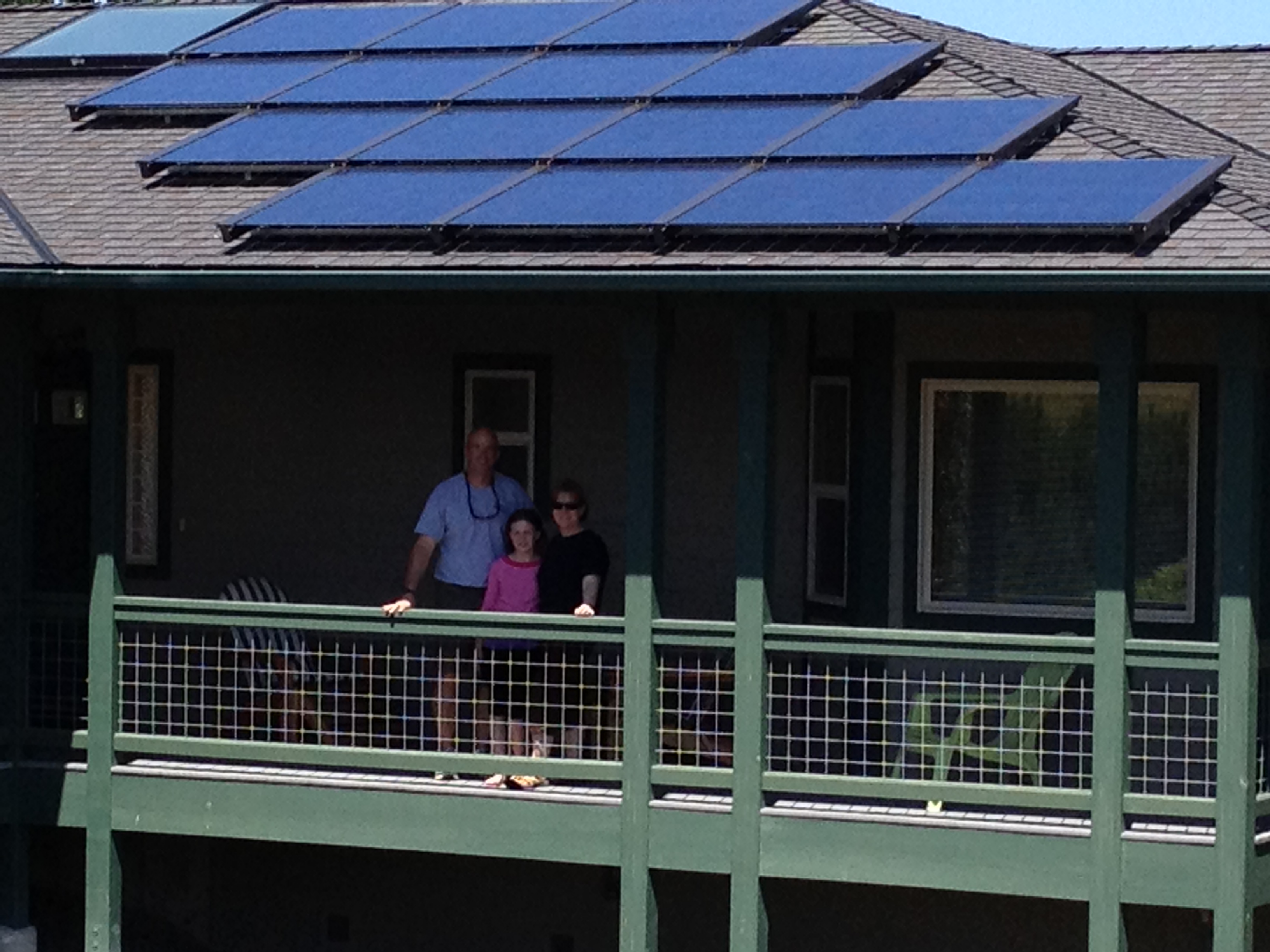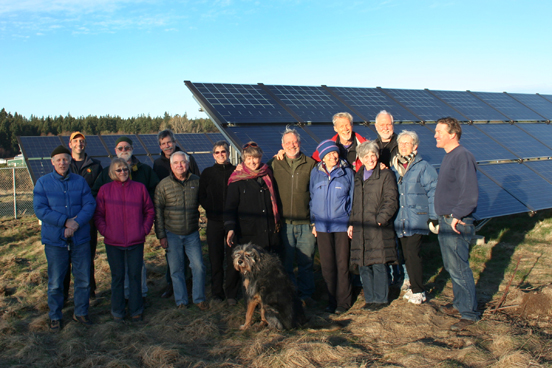Power Trip Energy designers & installers complete SunPower Advanced training
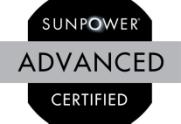 Four members of the Power Trip Energy team recently completed some advanced training offered by one of our favorite partners in the industry. We love working with SunPower because they make the most efficient products available on the market, and they also have great training support for their dealers.
Four members of the Power Trip Energy team recently completed some advanced training offered by one of our favorite partners in the industry. We love working with SunPower because they make the most efficient products available on the market, and they also have great training support for their dealers.
Andy, Steve, Jacob, and Caleb all completed the one day Advanced Residential Installation Course and passed the test a week later. Andy & Steve also completed the two day Advanced Residential Design course and test. Even after 10 years in the industry, there is a lot to learn. We were happy to learn more about SunPower’s design philosophies and recommendations for best installation practices.
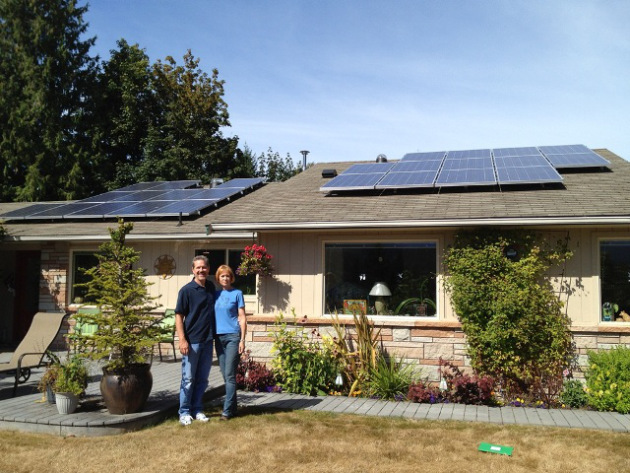
Sales Tax Exemption Clarifications Ahead of Expiration on June 30
We have enjoyed sales tax exemption for equipment that generates electricity for over 10 years here in Washington State. Come July 1st, that particular party is over and grid-tied pv becomes 9.0% more expensive in our home town of Port Townsend; most municipalities have sales tax rates in the 8’s. We are very close to filling our calendar and will soon be unable to commit to completing projects before June 30.
We will however be able to sell the equipment without sales tax if the buyer receives the equipment on or before June 30, 2013.
For the installation charges to qualify for the sales tax exemption as well, the labor must be performed no later than June 30, 2013. Any labor services performed after June 30, 2013, are fully subject to sales tax.
So while we normally enjoy a healthy philosophical and political debate, please withhold your comments as to whether having sales tax instead of income tax is “fair” or “regressive.” We are too busy installing to think about it right now. Maybe we’ll take a couple of days off in July to ponder that question.
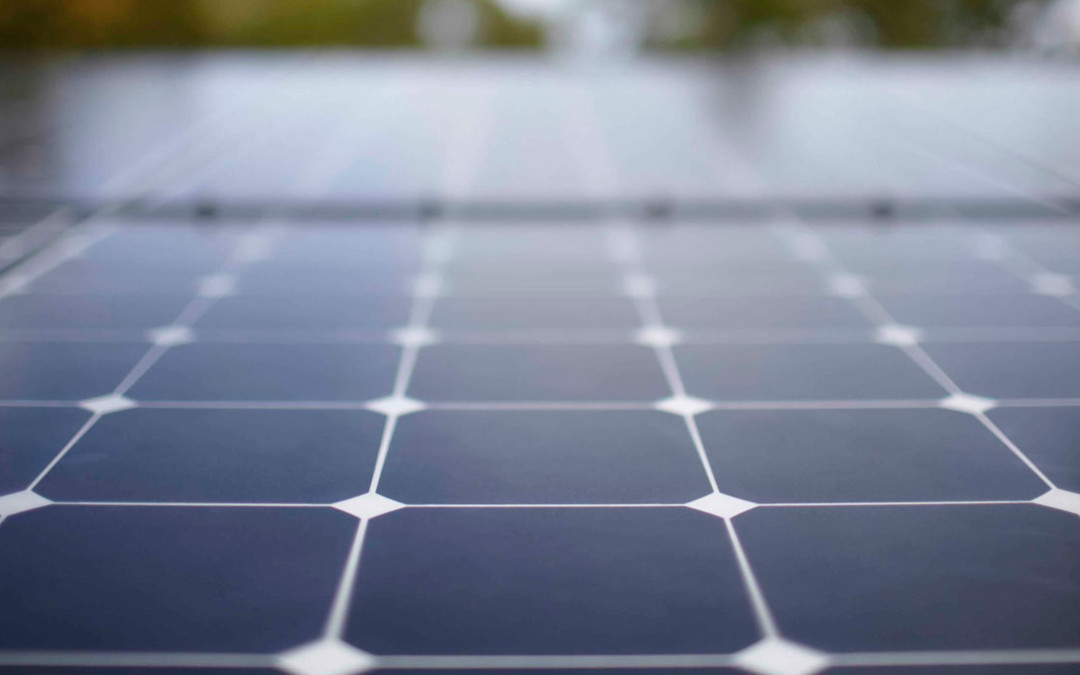
More Third Party Support for SunPower’s efficiency claims – top 3 spots in Photon’s 2012 field tests
SunPower’s E-Series modules take the top 3 spots in the respected Photon field test. One of SunPower’s claims is that their lower temperature coefficients produce better real world results than can be demonstrated in the lab. These field tests are more third party support for those claims. Way to go SunPower! We are happy to be partners with this company.
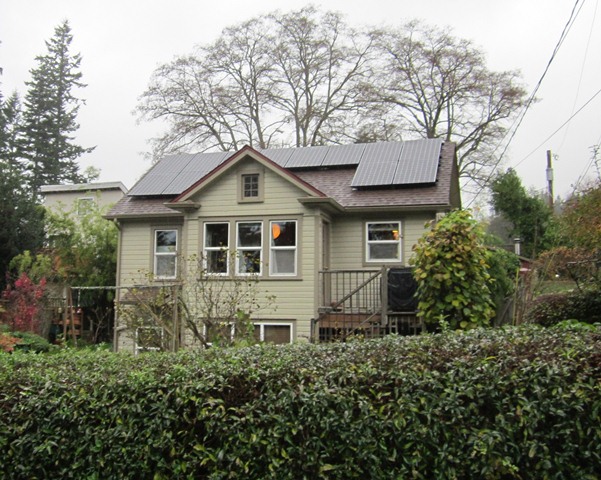
PSE Simplifies Net Metering Bill
Click on the link below to preview PSE’s new net metering bill, which will greatly simplify the presentation of the pertinent information for net metering customers. The new bills will not require a hand crafted “addendum”, and importantly, PSE will now have the ability to automatically deduct the correct dollar amount for customers set up with automatic withdraws.
All net metering customers will be getting new account numbers, and the function of the meters will be clearly labeled on the bill. Its been a long time coming, but we recognize the difficulties involved for such a mammoth organization, and we compliment PSE on their efforts to make the net metering bills more clear, and eliminate the expense of generating these bills by hand by upgrading their billing software.
We also appreciate this excellent graphic which will help us explain the billing to our clients. Good work, PSE!
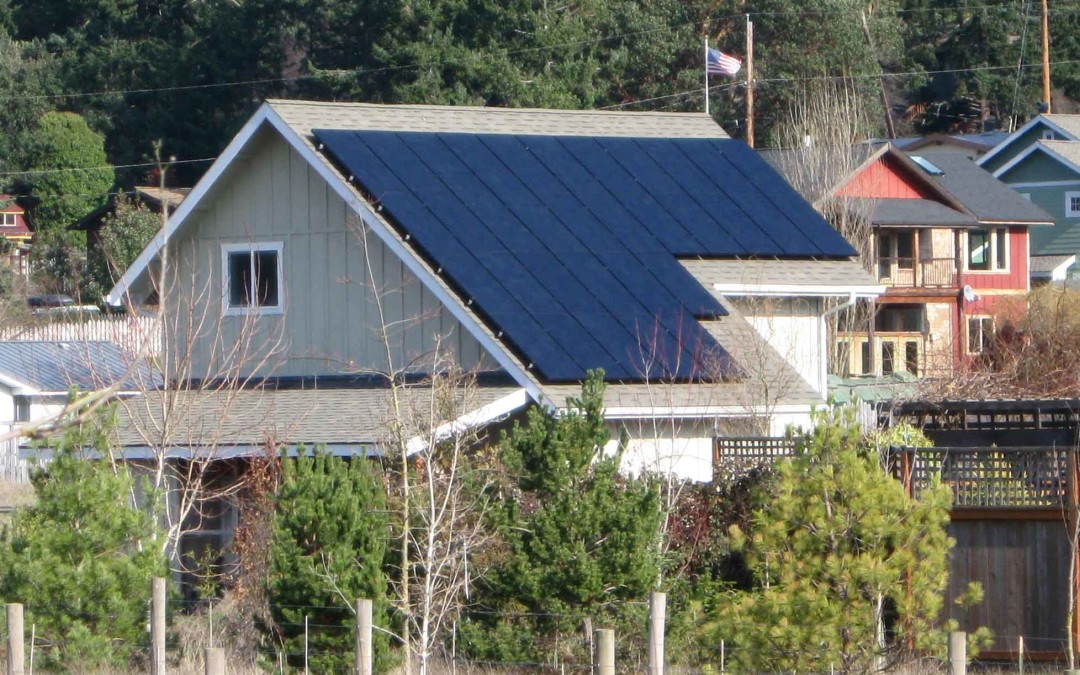
Your HOA Will Love Your New Solar Array Here in Washington
We have had several clients recently with concerns about their Home Owners Associations and whether they will allow the installation of solar on the roof. The answer is of course they will! In case your HOA is uninformed of the law, you can help them fulfill their legal obligations by discussing RCW 64.38.055.
This law has been in place since 2009 and makes it clear the HOA may not prohibit installation of solar panels that make electricity or heat water. It does allow the governing documents to make these stipulations:
a) No part of a roof-mounted solar energy panel can go above the roof line;
b) On arrays facing the street, the array must conform to slope of roof and the top edge must parallel the ridge; or
c) Frames, brackets and conduit must be painted to match roof scheme, or if ground-mounted, the array must be shielded unless shielding degrades performance of the array by more than 10%.
Any HOA governing documents that do not conform with this law are void and unenforceable.
We would welcome the opportunity to help you educate any HOA boards that are not acting within the spirit of the law.
The link to the on-line RCW is here http://apps.leg.wa.gov/rcw/default.aspx?cite=64.38.055
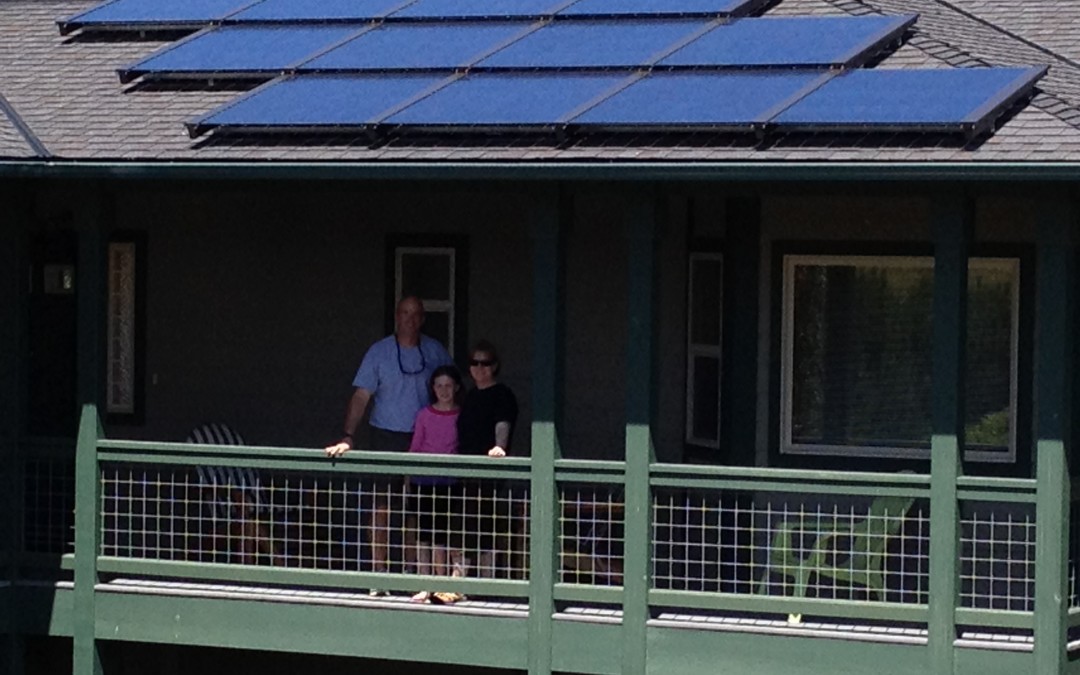
Economic Devt of Energy on Jefferson County Land – Upcoming Workshop and Public Energy Lunch
Tuesday January 15, 11am – 12noon, Port Townsend Community Center, 620 Lawrence St (Lawrence & Tyler St), Uptown Port Townsend
At an upcoming workshop next week, local economic development professionals will speak with Norm Olsen of the Iowa Energy Center of ISU regarding the possibilities and feasibility of local energy production.
The Workshop Chair will be Laura Lewis, County Director, WSU Extension Jefferson County.
The panelists include:
Peter Quinn, EDC Team Jefferson (Jefferson County)
Norm Olsen, Iowa Energy Center of ISU (Ames, IA)
Jim Hansen, Ravenna Capital Management (Seattle, WA)
Graeme Sackrison, Thurston Energy (Lacey, WA)
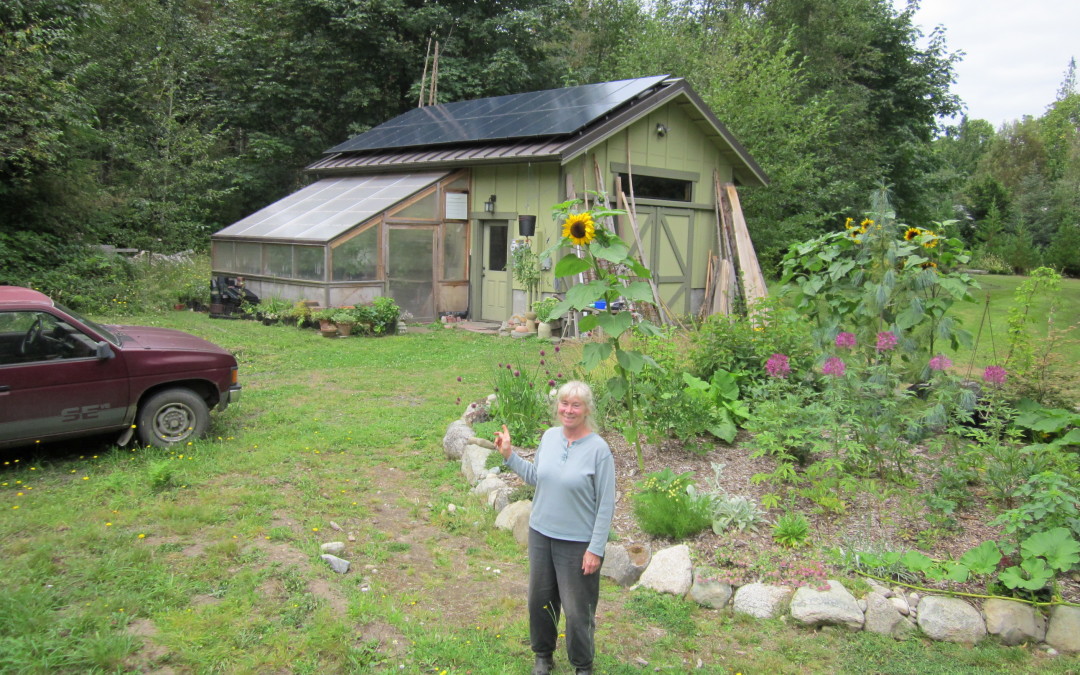
Washington State’s Production Incentive – Part 1
Here in Washington, we benefit from a state program designed to promote the installation of pv which offers an annual payment based on production, rather than a one time up-front rebate or tax credit (as found in many other states.) I will explain this program in two parts; this post will relate to individual projects, be they residential or commercial, and the next post will endeavor to navigate the morass of community solar projects.
The program was originally passed as law in 2005 and was eventually implemented by the Dept of Revenue and the eleven largest utilities in the state in 2006. The applicable codes may be found in RCW 82.16.110 and WAC 458-20-273. The program states that owners of grid-tied pv, wind, or anaerobic digesters will receive an annual payment based on the amount of kwh (kilowatt-hours) they have produced during the previous calendar year. The base rate is $0.15 per kwh and there are several multipliers that can raise or lower that rate. The program has a couple of different caps that limit payments both individually and overall, and it rewards the use of Made in Washington equipment with higher rates. The current end date of the program is June 30, 2020, giving us 7 more full summers to my reckoning.
To offer some pricing perspective, the retail price of electricity here in Puget Sound Energy Land is currently about $0.10 per kwh, and in the land of our nearby public power cousins like Clallam PUD, the rate is closer to $0.07 per kwh. Consider that as you read about the production incentive rates and multipliers.
Mulitpliers – While the base rate is $0.15 per kwh, the rate for wind power is 0.8 times that so only $0.12 per kwh. The main components for pv are the modules and the inverters. If you are using modules made in WA the multiplier is 2.4, so you get $0.36 per kwh produced, and if you are using a made in WA inverter, the multiplier is 1.2 so you get $0.18 per kwh. The Dept of Revenue in 2006 (before any made in WA modules were available) made the determination those rates were additive, so using Made in WA modules on a Made in WA inverter yields a whopping total of $0.54 per kwh. This program is equivalent to a FIT (Feed-In Tariff), and at its peak, the German FIT was the equivalent of $0.52 per kwh. Since around 2007 the German FIT has decreased (and the value of Euro:Dollar), while the Washington rate has remained static. Today it remains among the highest FIT equivalent rates globally.
Caps (nasty caps) – While the state’s incentive program is pretty special in a global context in terms of the rate, there are two significant caps on the program that make sure Washington’s incentive program remains among the All-Stars of the Little Leagues.
The first cap is on the annual maximum amount an individual “customer-generator ” can get paid, and that cap is $5000. This figure means that the largest system someone would design to if trying to maximize yield would be about a 30 KW system for the most competitive products on the global market, or a 10 KW system using the Made in WA equipment. While these caps are probably appropriate for a residence or a small business like ours, they render the program inconsequential for a commercial venture of any size. As a result, the commercial market in our state is inconsequential.
The second cap is on the dollar amount of the overall incentive pool (per utility), and this cap is at 0.5% of the utility’s overall taxable utility revenue. The mechanism for these incentives is that the utility reads the production meters for these systems, figures the correct dollar amount and pays the incentive, and then takes a credit on their utility tax bill they pay to the state. The cap was decreased to one half of one percent the last time the solar industry lobbied for some changes to improve the program. This cap can be accurately referred to as puny. Needless to say, we are dedicating ourselves to blowing through this lame cap way before 2020 in every utility territory wherein we do business. Once the overall caps are exceeded all incentive applicants will receive prorated payments.
Made in WA equipment – When this program was introduced, I did not like to talk about the possibility of higher incentive rates for Made in WA equipment because there were no companies making modules in Washington.
That changed in early 2010 when we started using Silicon Energy (SiE) pv modules made in Arlington, WA. They had some funky differences from the standard products and they were way more expensive so we grumbled, but gave them the benefit of the doubt and checked them out, slowly making them available on select projects where we thought they were the best fit. As it turned out, the product was indeed superior as confirmed by NREL (the National Renewable Energy Lab) tests, and they have proven to be customer service oriented, and dedicated to a practical, reliable business relationship. Once we had a couple of installations completed and had figured our own best practices in terms of installations, we stopped grumbling. The price is a premium, but we own two SiE arrays on our shop, and have a significant stake in a community solar array using SiE modules. While we are still not sure the economics tilt the scale towards using SiE as we now call them, we are willing to pay the steep premium for a fine locally-made product. At this point, about 30% of our clients decide to utilize SiE products.
In late 2011, we were approached by a new Washington company called Itek (made in Bellingham), and I now have 2.1 KW of Itek pv on my roof at home. We have yet to install Itek any for clients for several reasons, though we are looking forward to developing a good relationship with them in the future. More posts to follow regarding Itek and their partners Blue Frog micro-inverters (made in Poulsbo.)
As the calendar progresses towards June 30, 2020, the competitive advantage enjoyed by the Washington manufacturers becomes less significant, so hopefully, they will be able to improve their efficiencies and decrease their costs in order to stay competitive in the global market and compete with long-time solar giants like SunPower, Sharp, Panasonic, and the aggressive new Asian entrants to the market (you may have heard of companies like Hyundai and Samsung.)
Duration – As I mentioned a couple of times now, this incentive program is in place until June 30, 2020. My kids, (which are now 8, 6, and 2), will be 15, 12, and 9 on that date, so it seems like a long time away to me. In reality, the program has been in place 7 years, and has 7 summers remaining. When the program was originally passed in 2005, the sunset date was 2014. In 2007 though, the date was extended from 2014 to 2020. Washington State had a budget surplus in 2007, and it was relatively easy for the state legislature to invest in programs like this, which models showed to actually be revenue neutral, due to the increased jobs in the nascent solar industry. The jobs have been created so those models were probably accurate. Nevertheless, it is apparent there will be no expansion or extension of the incentives as long as the state’s budget is in its current dire straits. Will this turn around before 2020? Will the incentive be extended? Will the state even remain solvent that long to make good on its current commitments (and will I see any return on my meager investments into GET, the state’s pre-paid college tuition fund)? Gaze in your own crystal ball, I will not commit my guesses to writing, but it is safe to say I am not holding my breath.
I will be covering the Community Solar aspect of the Washington Solar Incentives in Part 2 of this series, but it will not be until after I have received my first payment for our own Jefferson Solar Group’s community solar project, which should be sent before the end of this year.
Please feel free to comment, and also let me know which of the other topics I touched on in this post you might like to see further exploration.

Fields of Blue
The year 2011 was a good year for big solar in the US, in terms of large scale projects (1 megawatt and larger). Utility-scale installations are on a dramatic upswing, surpassing the growth-rate and overall megawatt capacity of residential installations, and nearly equal to the commercial pv installations in 2011. Larry Sherwood has published a preview of his 2011 national market survey in the July/Aug 2012 issue of Solar Today, not yet online but soon to be digital athttp://ases.org/solar-today-magazine/ His study is commissioned by IREC and the full report will be available later this summer at http://www.irecusa.org/news-events/publications-reports/
Much of this flurry of activity is the result of the closing window of the US 1603 Grant Program, in which commercial and utility sector installations qualified for a 30% grant from the federal government, in lieu of the 30% tax credit, which is also available for residential projects. While the tax credit is in place until 2016, the 1603 grant had a very short window of existence. It was authorized by law in 2009, but wasn’t really available until 2010 after a lengthy rules-making process by the Treasury Dept. The grant expired at the end of 2011, and was the subject of much press and concern among our clients, though this did not affect them at all, since we install nearly exclusively in the residential sector.
The purpose of the grant was to make the same 30% federal incentive available in cases where the project owners did not have sufficient tax liability to take advantage of the tax credit. It is often the case that a large project will be undertaken by an LLC, S-Corp, or some other form of business unit created exclusively for the development of that particular project. The corporations don’t have any tax liability until after the projects become profitable, and so it is problematic for them to take the tax credits for the initial development. The 1603 grant in lieu of tax credit solved this problem for developers, but only for a relatively short time. The brief window of opportunity is difficult for developers of large projects to put together ownership groups, financing, insurance, permitting, any required environmental mitigations, etc. We are lucky to have the stable tax policy for the basic tax credit for the residential and small commercial installations we address.
A couple of times a week, people send me news and notice of a new large scale, ground-mounted, utility-scale pv installation being installed. I have reservations about these projects for several reasons. I should start by saying that of course they are preferable to a new coal plant, before I express my concerns about them. From an environmental stand-point, they are tremendously superior to other power plants. There are downsides to all activity, but from a perspective of pollutants and environmental hazards, the large scale pv power plants are better in every respect.
There are three main problems I see with these utility scale pv projects however. Some people have the opinion that these plants are going in hitherto-unused land, usually in the middle of a desert. I have spent some time in deserts in the American south west, and while you can successfully find places with no people, there is no “unused” land. There is definitely habitat degradation that occurs in conjunction with these activities, and some of the species affected are already highly impacted by human development.
Whether that impact is anywhere near comparable to the impact that would be the result of a similarly sized coal plant – I doubt it, but is truthfully beyond my ability to answer. I have seen some of these projects installed in formerly used agricultural land in California that is now fallow for some reason – most likely due to unsustainable farming practices. I would rather see agricultural reclamation of these areas as I know that most of southern California is in sore need of cleaner air and water, and that sound organic agricultural practices are probably a fine way to have a positive impact on air and water locally. Covering the ground with pv modules may power Fresno’s air conditioners, but doesn’t contribute to the overall solutions, of which some perennial agriculture could address. Instead of covering land that is home to some of the unique plants and animals of the earth, wouldn’t it be better to put solar panels over areas that are truly not used, such as over land we’ve already covered with concrete, asphalt, or buildings?
Secondly, there is inefficiency in transmission. By placing a large pv array hundreds of miles from the point of use, we need fairly expensive transmission infrastructure, complete with huge rights of way and also power losses inherent in transmission. This centralized power production model is the traditional mode of power generation and transmission. If you need more energy, just build more power plants and more transmission lines. To this line of thinking, any big problem just requires a bigger hammer. There is much more efficiency and elegance in created the power at the point of use. Doesn’t it make more sense to avoid the inherent inefficiencies of transmission and make power where and when it is needed?
Perhaps the biggest problem with these utility-scale pv plants is that in effect, they are privatizing a democratically distributed natural resource. I have a funny feeling when I see my environmentalist friends celebrating these large pv installations, or forwarding to me a graphic showing how pv in North Africa could provide enough energy for the whole world. Sure, it’s better than a coal plant environmentally, but there is a major problem with the economic model. Without delving too much into politics or philosophy, perhaps I can explain this best if I just say I want my own solar power and I don’t want to pay The Man. Think about writing that check every month to the utility. Think about where that money goes. Even if you have a local public utility handling the local distribution network, the bulk of your electricity dollar goes to the people who are supplying the originally generated electricity, who own the power plants – and their bankers. I don’t want any of my money going to them.
The solution to all of these shortcomings is found within the model our company has pursued, appropriate to our scale and our community – that of distributed generation and individual ownership of local clean renewable energy systems. The utility scale model occupies land that is a natural resource, (commonly public land and fragile environments), distributes the power inefficiently, to the economic benefit of the investors and project developers. The individual scale project generally occupies rooftops, uses the power generated on-site or ships onto the grid and across the street to the neighbors, and provides the direct economic benefit to the homeowner.
I would guess that 1/3 of the homes in the US are occupied by their owners who either own their homes outright or have equity in their homes. I would also guess that at least here in the northwest, 1/3 of the homes have a good unshaded roof suitable for pv. So the bottom line is that until we’ve figured out a way to get solar onto the 1/9 (11%) of the homes that meet those two conditions, we probably shouldn’t spend much time swooning over massive utility-owned pv arrays in the desert.
There are many shades of gray between these two choices, including Community Solar projects such as the Ellensburg project pictured below, and there are lots of ways third parties are trying to get involved in such a manner as to skim the economic benefits from the homeowners in residential pv projects. No surprise there right? Community solar and project financing will be topics of subsequent articles.
|
President Obama touting clean energy in front of 250 MW of First Solar pv in Boulder City, NV, 2012.
Project owned by Sempra US Gas & Power, NASDAQ symbol SRE
|
 |
|
Steve and Caleb of Power Trip Energy touting and installing clean community-owned solar, 13 KW of First Solar pv in Ellensburg, WA, 2009.
Project owned by Ellensburg electricity rate payers and administered by the City of Ellensburg, WA
Project info available at http://www.ci.ellensburg.wa.us/index.aspx?NID=310
Photo source https://powertripenergy.com/Projects-2009.htm
|
Greetings from Power Trip Energy
This space will host opinions from the folks at Power Trip Energy regarding renewable energy topics, mostly from the perspective of a small solar installation company. Some topics will be national or global, but will mostly relate to our beloved northwest corner of the country.
